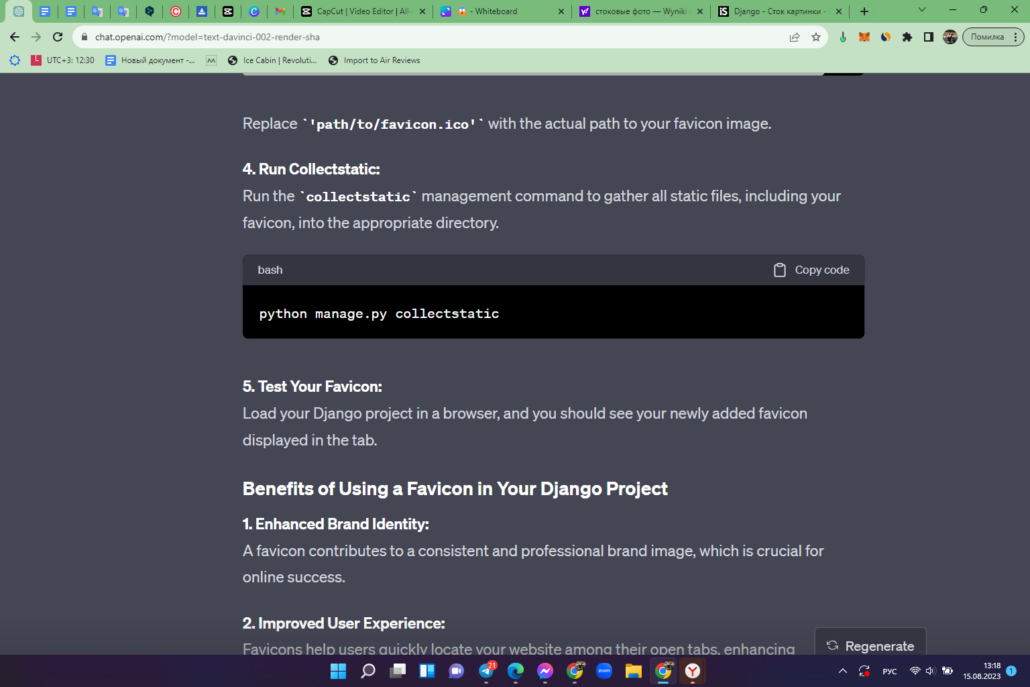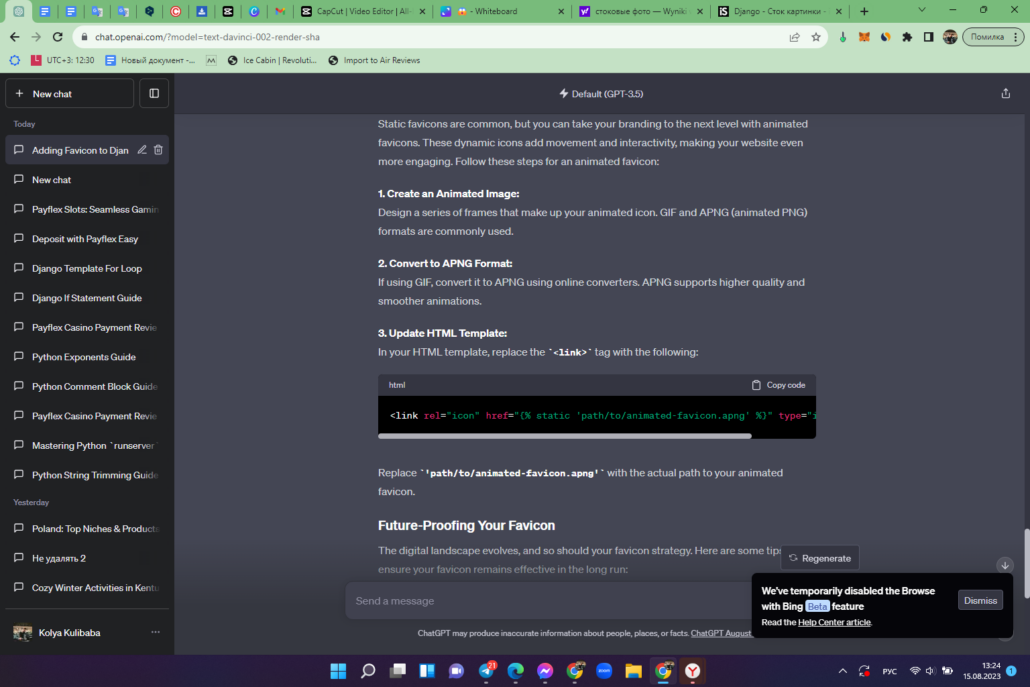In the digital world, small details can make a big difference. One such detail is the favicon, a tiny but impactful element that enhances your website’s brand identity and user experience. In this guide, we’ll walk you through the process of adding a favicon to your Django project, ensuring your website stands out and leaves a memorable impression.
Introduction to Favicon and Its Significance
Favicons, short for “favorite icons,” are the small icons displayed in a browser’s tab or bookmark bar. They provide a visual representation of your website and improve its recognition among users. Integrating a favicon is a simple yet effective way to strengthen your website’s branding and identity.
Why Favicons Matter:
- Instant Brand Recognition: A well-designed favicon reinforces your brand and helps users recognize your website instantly;
- Professionalism: Favicons indicate attention to detail and professionalism, enhancing your website’s credibility;
- User Experience: Favicons improve navigation by helping users identify your website among multiple open tabs.
Step-by-Step Guide to Adding a Favicon to Your Django Project
1. Prepare Your Favicon:
Before you start, create a favicon image in the recommended size of 16×16 pixels or 32×32 pixels. You can design it to match your website’s logo or theme.
2. Choose a Location:
Place your favicon image in the static directory of your Django project. This ensures it can be easily accessed by the browser.
3. Update HTML Template:
In your project’s HTML template(s), locate the <head> section and add the following code snippet within it:

Replace ‘path/to/favicon.ico’ with the actual path to your favicon image.
4. Run Collectstatic: Run the collectstatic management command to gather all static files, including your favicon, into the appropriate directory.

5. Test Your Favicon: Load your Django project in a browser, and you should see your newly added favicon displayed in the tab.
Benefits of Using a Favicon in Your Django Project
1. Enhanced Brand Identity: A favicon contributes to a consistent and professional brand image, which is crucial for online success.
2. Improved User Experience: Favicons help users quickly locate your website among their open tabs, enhancing navigation and usability.
3. Visual Appeal: A well-designed favicon adds a visual element to your website, making it more visually appealing and memorable.

Favicon Best Practices
- Simplicity: Keep your favicon design simple and recognizable even at a small size;
- Consistency: Ensure your favicon aligns with your website’s overall design and branding;
- Transparency: Use a transparent background for a clean appearance on various browser themes;
- Regular Updates: If you update your logo or branding, remember to update your favicon as well.
Favicons vs. No Favicons
| Aspect | With Favicons | Without Favicons |
|---|---|---|
| Brand Recognition | Instant recognition of your brand | Less brand presence |
| Tab Navigation | Easy identification among open tabs | Potential user confusion |
| Professionalism | Enhanced website credibility | May appear less professional |
| Visual Appeal | Visually appealing and engaging | Lacks a visual element |
Troubleshooting Common Favicon Issues
Despite its simplicity, adding a favicon to your Django project might encounter a few hiccups. Here are solutions to common issues:
1. Favicon Not Displaying:
If your favicon isn’t showing up, check the file path in your HTML template. Make sure it matches the actual path to your favicon image in the static directory.
2. Cache Problems:
Browsers cache favicons, which can sometimes lead to outdated icons being displayed. To solve this, clear your browser’s cache or use a different browser to check the favicon.
3. Incorrect Format:
Ensure your favicon image is in the correct format (usually .ico). Convert your image to .ico format using online converters if needed.
Advanced Customization: Animated Favicons
Static favicons are common, but you can take your branding to the next level with animated favicons. These dynamic icons add movement and interactivity, making your website even more engaging. Follow these steps for an animated favicon:
1. Create an Animated Image:
Design a series of frames that make up your animated icon. GIF and APNG (animated PNG) formats are commonly used.
2. Convert to APNG Format:
If using GIF, convert it to APNG using online converters. APNG supports higher quality and smoother animations.
3. Update HTML Template:
In your HTML template, replace the <link> tag with the following:

Replace ‘path/to/animated-favicon.apng’ with the actual path to your animated favicon.
Future-Proofing Your Favicon
The digital landscape evolves, and so should your favicon strategy. Here are some tips to ensure your favicon remains effective in the long run:
1. Test Across Devices:
Ensure your favicon displays correctly on various devices, including smartphones and tablets.
2. Monitor Trends:
Stay updated with design trends and reconsider updating your favicon if it starts to look outdated.
3. Consider Accessibility:
Ensure your favicon is visible and distinguishable for users with visual impairments.
4. Adapt to New Formats:
As web technologies advance, explore new image formats and techniques for even better favicons.
Conclusion
By adding a favicon to your Django project, you elevate your website’s aesthetics, improve user experience, and establish a strong brand presence. Implementing this small yet impactful detail can go a long way in making your website memorable and user-friendly.

